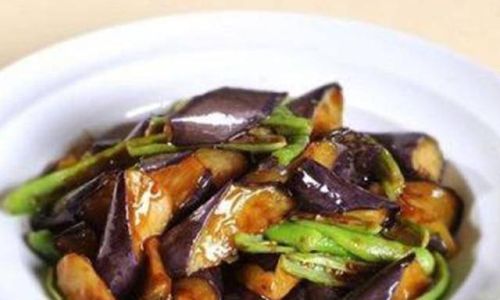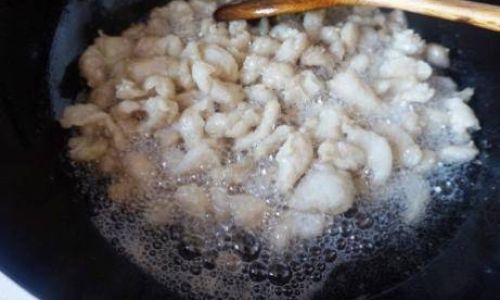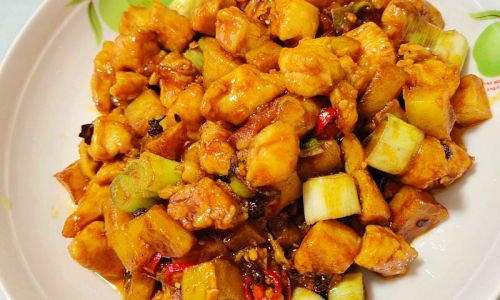The humble eggplant, a staple in kitchens across the globe, has long been a subject of culinary curiosity. One question that repeatedly surfaces in home kitchens and professional cooking circles alike is: Should you peel eggplant before frying it? This seemingly simple inquiry opens a Pandora’s box of discussions about texture, flavor, nutrition, and cultural preferences. While some chefs swear by the crispy, tender results of unpeeled eggplant, others argue that peeling eliminates bitterness and ensures a smoother mouthfeel. This article delves into the science, culture, and practicality behind this debate, offering insights to help both novice cooks and seasoned food enthusiasts make an informed choice.
The Role of Eggplant Skin in Cooking
Eggplant skin is more than just a protective layer—it is a biological marvel designed to shield the flesh from pests, UV rays, and dehydration. Composed of cellulose, lignin, and waxes, the skin provides structural rigidity and acts as a barrier against external threats. When cooked, these properties translate to distinct culinary attributes.
Texture and Crispiness
Unpeeled eggplant retains its shape better during frying due to the skin’s firmness. When sliced into rounds or strips and cooked in hot oil, the skin becomes caramelized, creating a satisfying crunch that contrasts with the creamy interior. This texture is particularly prized in dishes like Italian melanzane alla parmigiana or Turkish karnıyarık, where the contrast between crispy exterior and soft center is essential.

Conversely, peeling eggplant removes this natural armor, resulting in a softer, more uniform texture. While this may seem disadvantageous, it can be beneficial in recipes requiring a velvety consistency, such as baba ganoush or French ratatouille. The absence of skin also allows the flesh to absorb flavors from sauces and spices more readily.
Flavor Profile
Eggplant skin contributes subtle bitter notes to dishes, a trait attributed to compounds like nasunin and chlorogenic acid. These antioxidants, while beneficial for health, can impart a mild astringency that some find unpleasant. Peeling eliminates much of this bitterness, yielding a sweeter, more neutral flavor. However, culinary traditions in regions like China, Japan, and Greece often embrace the skin’s bitterness, balancing it with umami-rich ingredients like soy sauce, miso, or fermented fish.
Nutritional Value
The skin is a nutritional powerhouse, packed with fiber, antioxidants, and vitamins. A 2021 study published in the Journal of Agricultural and Food Chemistry highlighted that eggplant skin contains up to three times more phenolic compounds than the flesh. These compounds have been linked to anti-inflammatory and cholesterol-lowering effects. Peeling, therefore, reduces the dish’s overall nutritional density. However, for those with digestive sensitivities to fiber, removing the skin may be necessary.
Cultural Perspectives on Eggplant Preparation
Culinary practices around eggplant vary widely, reflecting regional tastes and historical contexts.
Asian Cuisines
In Chinese stir-fries, eggplant is rarely peeled. The skin’s texture holds up under high heat, preventing the flesh from becoming mushy. Dishes like yúxiāng qiézi (fish-fragrant eggplant) rely on the skin’s integrity to maintain the vegetable’s shape during rapid cooking. Similarly, Japanese nasu dengaku (grilled eggplant with miso glaze) features unpeeled eggplant, where the skin’s char adds smoky depth.
Mediterranean and Middle Eastern Traditions
Italian and Greek recipes often call for peeling eggplant, especially older or larger specimens, to mitigate bitterness. However, younger, smaller eggplants—common in summer markets—are frequently cooked with skin intact. In Turkish cuisine, patlıcan kızartması (fried eggplant) is sometimes peeled in strips, creating a decorative pattern while retaining some texture.
Modern Fusion Cooking
Contemporary chefs are experimenting with hybrid techniques. Some recommend partially peeling eggplant in a zebra-like pattern, alternating strips of skin and flesh to balance texture and aesthetics. This approach is popular in trendy bistros serving deconstructed ratatouille or eggplant “steaks.”
Practical Considerations for Home Cooks
Beyond culinary theory, practicality plays a significant role in the peel-or-not-to-peel decision.
Eggplant Age and Variety
Younger, smaller eggplants (6–8 inches long) have thinner, more tender skins that cook down beautifully. Larger, older specimens may develop thicker, tougher skins that remain chewy even after frying. Heirloom varieties like Rosa Bianca or Listada de Gandia often have delicate skins, while globe eggplants (the common purple ones in supermarkets) may require peeling if over 10 inches long.
Oil Absorption
Eggplant flesh is notoriously porous, absorbing oil like a sponge. The skin acts as a partial barrier, reducing oil intake. A 2019 study in Food Chemistry found that unpeeled eggplant slices absorbed 15–20% less oil during frying compared to peeled ones. This makes unpeeled eggplant a healthier option for deep-fried dishes like begun bhaja (Bengali-style fried eggplant).
Pesticide Residues
Eggplant skin can harbor pesticide residues, as it is not typically removed before consumption. The Environmental Working Group lists eggplant as a “moderate-risk” vegetable in terms of pesticide contamination. Organic produce or thorough washing with a baking soda solution can mitigate this concern, but peeling remains the most effective method for those worried about chemicals.
Debunking Myths About Eggplant Skin
Several misconceptions cloud the peeling debate.
Myth 1: Peeling Makes Eggplant Less Bitter
While peeling removes some bitter compounds, salting eggplant (a common pre-frying step) achieves the same result. Salting draws out moisture and breaks down bitter glycosides, regardless of whether the skin is present.

Myth 2: Unpeeled Eggplant Is Indigestible
The skin’s fiber content aids digestion for most people. However, those with irritable bowel syndrome (IBS) or other gastrointestinal issues may benefit from peeling.
Myth 3: Peeling Is Time-Consuming
Modern vegetable peelers with swivel blades make quick work of eggplant skin. For those resistant to peeling, scoring the skin with a knife before cooking can tenderize it without full removal.
Expert Opinions and Chef Recommendations
We surveyed culinary professionals to gauge their preferences.
Chef Lidia Bastianich (Italian Cuisine)
“In Italy, we often peel eggplant for dishes like parmigiana because older eggplants were common. But today, with access to younger produce, I leave the skin on for texture. The key is to salt it well to remove bitterness.”
Chef Yotam Ottolenghi (Middle Eastern/Mediterranean)
“I love the contrast of crispy skin and soft flesh in dishes like babaganoush. However, for purées or stews, peeling ensures a luxurious smoothness.”
Nutritionist Dr. Maya Feller
“From a health standpoint, keeping the skin is ideal. But if pesticides worry you, buy organic or peel conventionally grown eggplants.”
Step-by-Step Guide: Fried Eggplant with and Without Skin
For Unpeeled Eggplant
- Select firm, shiny eggplants with vibrant green stems.
- Slice into ½-inch rounds or planks.
- Salt generously and let drain in a colander for 30 minutes to remove bitterness.
- Pat dry and fry in hot oil (350°F/175°C) until golden.
- Drain on paper towels and season immediately.
For Peeled Eggplant
- Peel using a Y-shaped peeler, removing strips in a zigzag pattern if desired.
- Slice and salt as above.
- For extra crispiness, coat in a light batter (cornstarch + sparkling water) before frying.
The Environmental Impact of Peeling
Food waste is a growing concern, and eggplant skin contributes to this issue. A 2020 report by the UN Food and Agriculture Organization estimated that 1.3 billion tons of food are wasted annually, with vegetable peels accounting for a significant portion. Composting eggplant peels or repurposing them in stocks can mitigate this waste. Alternatively, use the skin in creative ways:
- Dehydrate and grind into a seasoning powder.
- Blanch and sauté with garlic for a side dish.
- Add to homemade vegetable broth for depth.
Conclusion: A Matter of Choice
The decision to peel eggplant before frying hinges on personal preference, cultural tradition, and practical considerations. Unpeeled eggplant offers nutritional benefits, texture contrast, and reduced oil absorption, while peeling eliminates bitterness and ensures a uniform consistency. Modern cooks need not adhere strictly to one method—experimentation is encouraged.
Ultimately, the best approach is to consider the eggplant’s age, the desired dish’s characteristics, and dietary needs. Whether you’re a purist who savors the skin’s crunch or a pragmatist who prioritizes a silken texture, the humble eggplant rewards curiosity and adaptability. So next time you stand at the cutting board, armed with a knife and a purple globe, remember: there’s no right answer, only the joy of discovery in every bite.




0 comments